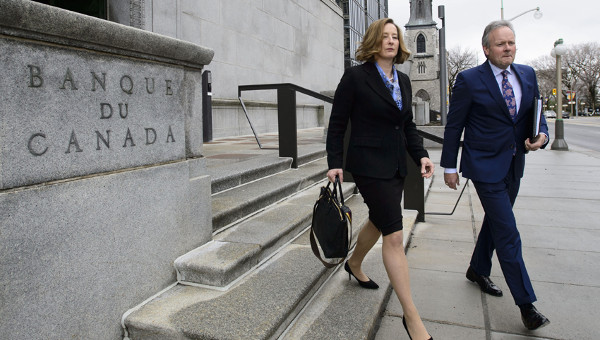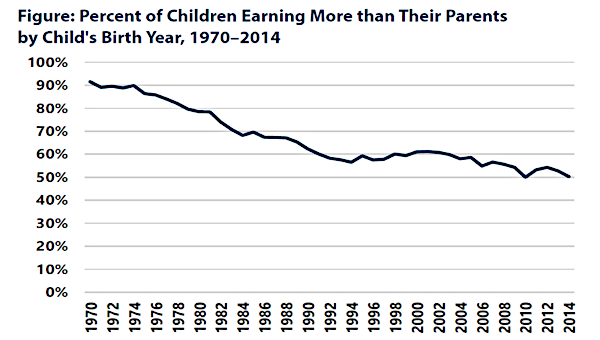The Bank of Canada: In Crisis and Beyond
Viewing the COVID-19 pandemic as a purely exogenous shock, Canadian economists and policymakers have tended to predict a quick return to economic growth once health restrictions are lifted. As an account of current events, this turns a blind eye to the uneven forms of adjustment produced by years of neoliberal cutbacks and how these both make a quick recovery unlikely and impose the burden of loss on care workers, racialized populations, and the working class more generally. Moreover, such framing of events warns of a new age of hyper-austerity when the health crisis abates, as governments either use debt to justify rollbacks or passively embrace financial discipline. The further erosion of public planning and investment this would entail makes avoiding another lost decade and addressing the environmental crisis ever more difficult to imagine. And yet, while many progressive commentators have called out these contradictions, not enough has been done to rethink the operation of key neoliberal institutions and put forward practical reforms that ultimately challenge their class constitution.

This reflects above all in the reluctance to see the Bank of Canada (BoC) as anything more than a neutral arbiter of the nation’s financial and monetary stability. Despite the bank’s obvious economic power and the key role it continues to play backstopping fiscal intervention during the pandemic, there has been very limited debate about its evolving responsibilities and the opportunities and limits these pose for democratic reform and just transition. At work here is the assumption that the bank is a relatively static and purely technocratic institution with limited political capabilities. Starting from this position, we can be easily fooled into ignoring the bank’s institutional adaptability and political saliency, and into thinking it can be magically reborn as a progressive institution.
Against Neutrality and Stasis: The Bank of Canada from 1938 to 2020
The Bank of Canada has important monetary and financial system responsibilities and “far-reaching powers” that can “wield a heavy (if indirect) influence on people’s day-to-day lives,” but it lacks the democratic accountability of other policy institutions (Berg 2018: 2). The bank’s “independence” means that the government sets its basic priorities, but does not interfere in day-to-day operations. As a result, the bank’s six-member Governing Council essentially controls the decision-making process.1 Particularly important is that the Bank of Canada Act, the statute governing the bank’s operations, provides a wide interpretation of its central authorities: the bank is responsible for regulating currency and credit in a way that “protects the external value of the national monetary unit” and “promotes the economic and financial welfare of Canada.”
The flexibility provided by the Bank of Canada Act has been a key source of the BoC’s organizational plasticity, since it provides space for institutional learning and trial-and-error experimentation, and allows adaptation to changing policy ideas as well as wider economic shifts. While there are no clear dividing lines, we can separate the bank’s development following nationalization in 1938 into three distinct periods. From 1938 to 1974, the bank tended to accommodate fiscal policy expansion by purchasing a relatively large share of government treasury bonds (Ryan 2018).2 This prevented private financial markets from disciplining public borrowing through high interest rates, and allowed the government to fund its obligations cheaply, thereby setting the conditions for the development of social citizenship rights through the post-war expansion. During this period, the bank associated inflation with variations in aggregate demand and often utilized the Philips curve, which predicted an inverse relationship between inflation and unemployment, to make policy decisions: “the predominant view… was that a focus on the demand side of the economy was entirely appropriate for understanding aggregate fluctuations and changes in inflation” (Ragan 2011; Crow 2009).
This changed following 1974 amid the development of new economic ideologies and class relations, which aimed to liberate sections of the economy from government intervention and saw Keynesian demand policies as a barrier to free market prosperity. The rise of a new international monetary framework stressing the removal of post-war financial and monetary constraints was essential as well, since it established new broad constraints on the bank’s actions. Like other central banks, the BoC gradually adopted a quantity theory approach to inflation and began targeting money supply growth. As the bank forced governments to fund debt through private channels and no longer passively absorbed treasuries by issuing money, government debt rapidly outpaced real output growth (Protopapadakis and Siegal 1986).
While the bank stopped monetary targeting in 1982, marking the end of monetarist experimentation, this helped set the stage for its commitment to price stability in 1988 and the development of its inflation targeting regime three years later. The period from 1975 to 2007 thus marked the bank’s so-called “modernization,” characterized by its acceptance of orthodox economic theory and commitment to maintaining inflation at or near two per cent.3 More significant than these ideational and policy commitments were the economic relations they reflected and supported. At its core, this period signified a turning point in the bank’s approach to labour, as its low inflation target insured a degree of “slack” in the economy and a level of unemployment that held wages relatively stagnant.
The period following 2007 heralded another qualitative shift in the bank’s institutional development, as the financial crisis shifted the terms of monetary intervention and exposed major contradictions in the bank’s inflation agenda. Indeed, as interest rates fell to nearly zero in 2009 and remained persistently low in the post-crisis period, deflation now emerged as a key threat to financial stability, and the bank’s conventional policy tools no longer seemed up to the task of steering the economy. This was reinforced by the performance of global financial markets, which had proven far more volatility and far less rational than the bank anticipated. In this context, the bank searched for new ways to influence market outcomes, closely following the innovative policies developed elsewhere, and modified the terms of its inflation targeting approach by making it more “flexible” and “symmetrical.”4 This basically softened its low inflation objective by accepting a longer inflation targeting horizon5 and expressing equal concern about the inflation rate falling below two per cent.
But the major change took shape in 2016 when the bank renewed its inflation targets and added crisis-era innovations developed by the Federal Reserve and other central banks, such as large-scale asset purchases and funding for credit, into its policy toolkit. As much as these programs fit within the bank’s lender-of-last-resort responsibilities, this move toward unconventional policy involved the development of new institutional capacities and a high degree of policy learning. More importantly, although such programs were forward-looking, they involved an adjustment in the bank’s relationship to the financial system and “a giant increase in [its] power and responsibility”: behind the new modes of interaction with key financial institutions and ways of transmitting liquidity these measures entailed, stood a greater preoccupation with the stability of the financial system and a wider view of its role in the economy (Tooze 2020).
Thus, while the transformation of the bank’s policy tools and goals over the past decades is more complicated than can be described here, we can see it as both cautiously innovative and far-reaching. The bank adapted to changing circumstances and economic power relations from the 1970s through to the present, developing new institutional capacities to discipline labour and manage increasingly complex financial processes, whereby it greatly increased its economic influence and altered the terms of its relationship to private and public financial markets. Whether deliberately or not, this established the essential conditions for the financialization of Canadian capitalism, leading public policies “to become more accommodating to both domestic and foreign investment” (Davis and Kim 2015: 217; Stockhammer 2004).

Putting aside these wide-ranging impacts, what is primarily notable about the bank’s most recent policy shifts is that they have important distributive consequences. The bank trivializes the impact of its policies when it measures them solely in terms of overall economic performance and dismisses their wider political implications. According to the BoC’s own analysis, in fact, low inflation targets favour the interests of lenders over borrowers (Bank of Canada 2016: 15).6 This is consistent with a wider body of political science research which ties inflation targeting to growing inequality and the declining power of unions and labour organizations during the neoliberal period (Kirshner 2001, Blyth; Panitch and Gindin 2012). The large-scale asset program also shows clearly the distributive consequences and non-neutrality of central bank policy. This strategy aims to push investment out along the risk curve by “encouraging” the acquisition of a broad range of financial products and therefore attempts to improve financial conditions by boosting asset values and reducing longer-term interest rates (Bank of Canada 2015: 2). Such “rebalancing” of private portfolios increases access to credit while exacerbating existing patterns of wealth inequality, as asset inflation disproportionally favours those with large concentrations of financial wealth (Bank of Canada 2015: 2; Montecino and Epstein 2015).
All this cautions against associating the political independence of central bank policy with the political neutrality of its policy decisions and speaks to how the bank’s evolution under neoliberalism reflects the “institutional victory” of “certain groups and coalitions over others” (Kirshner 2001: 58; Blyth 2016). Moreover, we can see the Bank of Canada faces real constraints stemming from the international monetary system that impose clear limits on policy development: privatized currency markets and the global mobility of capital link Canada’s economic well-being to financial and monetary stability and to the bank’s credibility in fighting inflation. Yet neither these constraints, nor its anti-democratic orientation, suggest that the bank has reached the end of its history or is incapable of adjusting to new conditions.
Austerity and Public Banking
On April 1, the Bank of Canada began a major bond-buying program, following the tracks of the US Federal Reserve and other central banks around the world. Reminiscent of the bank’s post-war investment strategy, this program provides at least $5-billion per week (and certainly upwards of $200-billion in cumulative total, depending on how long the program lasts) to support the federal government’s recent spending plans. On top of this, it has increased the share of treasury bills it acquires at primary auctions to 40% and created new purchase programs to support provincial and corporate debt markets.7 Yet while the bank has made it easier for governments to fund deficits and lowered the cost of debt, there is a major contradiction in its rescue strategy: whereas the thrust of the bank’s policies have aimed at supporting credit conditions in the near term, the deficits governments accumulate will have long-term political implications, especially since the additional debt load will not build new productive capacity. Making matters worse, the bank has not committed to any form of yield curve control to ensure that government funding costs remain low in the years following the crisis, nor provided forward guidance regarding provincial debt markets, despite provinces having broad responsibility for health, education, and social services.8 This is consistent with the actions of other central banks who have framed similar interventions as “temporary short-term source[s] of additional funding” and explicitly rejected using monetary financing in the long-term (Elliot 2020; Bailey 2020).9
As the health crisis abates, then, Canadian governments will be forced to contend with unprecedented budget shortfalls and the need to use private markets as their main source of financing. Such conditions are likely to produce a new age of hyper-austerity: even if public debt markets are vastly different following the pandemic, governments will face pressure to reduce spending and to limit debt and will encounter the same conservative forces and logics that proudly restrained public investment following 2008 (Foroohar 2020). Preventing this is no doubt a top priority, not least because such policies would further erode the public planning capacities which allow governments to coordinate the distribution of labour and scare resources to strategically important sectors of the economy, and address pressing community and environmental needs. But this is not simply about adjusting the terms of fiscal policy by demanding governments accept budgetary shortfalls or raise the top income tax rate. Such demands are necessary but not sufficient, for they fail to address the discipline imposed on governments by private debt holders in the form of higher interest rates or investment strikes, and how even the threat of such outcomes can be mobilized to reduce the size and scope of government intervention in the economy.
Here we must acknowledge that while there is no simple solution to these underlying pressures in the near-term, the Bank of Canada has unique institutional capacities that can limit financial discipline and pre-emptively de-rail austerity measures. Utilizing these would require more innovative thinking and unconventional policies that further reimagine the bank’s relationship to private and public markets. More broadly, it would require social mobilization aimed at dislodging the bank from its neoliberal proclivities, and the articulation of specific demands regarding the bank’s role in supporting public investment that reset the terms of its cautious approach to policy innovation. These demands must acknowledge the constraints imposed by capital liberalization and financial interconnectedness, while offering the ability to develop democratic planning capacities that set the conditions for additional change in the future.

A logical starting point is calling for the bank to provide more comprehensive support to provincial and subnational governments, given they face unheard-of budget shortfalls and lack the revenue tools available to the national government. As Harold Chorney once suggested, no doubt aware it was one of the goals in creating the Bank of Canada, this might entail “allowing the provinces access to their relative share of the central bank’s debt acquisition capacity” (Chorney 1999:199). A more ambitious strategy involves the development of a new public bank, backstopped, but independent from, the BoC, that aims to support public investment and give governments access to cheap credit over the long-term.10 This would transform debt into a public asset while addressing two central constraints facing the BoC. First, such a bank could be democratically organized, with local branches across the country linked to regional and national offices capable of coordinating decisions and ensuring investment is efficiently allocated to projects Canadian’s truly prioritize. Second, it would avoid the potential or perceived limits on monetary financing created by the international monetary system and by the bank’s need to maintain credibility.
Needless to say, a public investment bank of this nature could play a key role in the decarbonization of the economy and in addressing the environmental crisis more generally, especially since it could engage in “loss making operations” as well as “highly subsidized programme lending” (Marois and Gungen 2019). It could also invest in equities with the aim of influencing corporate governance strategies, and support other kinds of publicly mandated investment in strategic industries. Finally, it would create space for democratic control over investment and allow some escape from the power relations within private debt markets, which give lenders control over the terms of public borrowing.
Thus, even if the return of austerity politics following the crisis is still far from certain, it is important to underscore the Bank of Canada’s adaptability and non-neutrality, and remind ourselves of the progressive opportunities this institution offers, even within the constraints imposed by neoliberal globalization. As the COVID-19 crisis has provided an x-ray of the precarious and vulnerable working conditions underpinning economic growth and exposed the vast socio-economic fault lines produced by years of cutbacks and market-friendly policies, it has provided powerful evidence about the feasibility of innovative spending programs and put central banks “in the political crosshairs” (Politi 2020). Taking the opportunity to rethink the bank’s role in the economy and the still one-sided view of its political and institutional capabilities, suggests extending its responsibilities may in fact push us closer to addressing today’s overlapping political, economic, and health crises. •
This article was adapted from an earlier essay published by the Canadian Centre for Policy Alternatives (CCPA).
Sources
- Bailey, A. (2020) “Andrew Bailey: Bank of England is not doing monetary financing,” Financial Times, April 5.
- Bank of Canada (2015) “Framework for Conducting Monetary Policy at Low Interest Rates,” Bank of Canada, December.
- Bank of Canada (2016) “Renewal of the Inflation Control Target,” Bank of Canada, October 24.
- Berg, R. van der. (2018) “Balancing the Independence and Accountability of the Bank of Canada,” Library of Parliament, November 23.
- Blyth, M. (2016) “Global Trumpism: Why Trump’s Victory was 30 Years in the Making and Why It Wont Stop Here,” Foreign Affairs, November 15.
- Braunstein, E. and J. Heintz (2008) “Gender bias and central bank policy: employment and inflation reduction,” International Review of Applied Economics, 22(2).
- Crow, J. (2009) ‘Canada’s Difficult Experience in Reducing Inflation: Cautionary Lessons. Commentary 299, Toronto: C.D. Howe Institute.
- Davis, G. and S. Kim (2015) Financialization of the Economy, Annual Review of Sociology, 41: 203-221.
- Elliott, L. (2020) “Bank of England to finance UK government Covid-19 crisis spending,” The Guardian, April 9.
- FMC (2020) “Protecting vital municipal services: Urgent federal recommendations to address the financial crisis in our cities and communities due to COVID-19,” Federation of Canadian Municipalities, April 23.
- Foroohar, R. (2020) “We are entering a new age of American austerity,” Financial Times, April 19.
- Kirshner, J. (2001) “The Political Economy of Low Inflation,” Journal of Economic Surveys, 15(1): 41-70.
- Marois, T and A.R. Gungen (2019) “A US green investment bank for all: Democratized finance for a just transition,” The Next System Project, September 19.
- Montecino, J.A and Gerald Epstein (2015) “Did Quantitative Easing Increase Income Inequality,” Institute for New Economic Thinking, Working Paper 28.
- Panitch, L. and S. Gindin (2012) The Making of Global Capitalism: The Political Economy of American Empire, New York: Verso.
- Politi, J. (2020) “Fed’s bailout role could put it in political crosshairs,” Financial Times, April 24.
- Protopapadakis, A. and J.J. Siegel (1986) “Are Government Deficits Monetized? Some International Evidence,” Business Review: Federal Reserve Bank of Philadelphia, November/December.
- Ragan, C. (2011) “The Evolution of Canadian Monetary Policy: Successful Ideas Through Natural Selection,” eds. Gorbet, F. and A. Sharpe, in New Directions for Intelligent Government in Canada, Ottawa: Centre for the Study of Living Standards.
- Ryan, J. (2018) “The Bank of Canada Should be Reinstated to its Original Mandated Purposes,” Canadian Dimension, March 21.
- Stockhammer, E. (2004) “Financialization and the slowdown of accumulation,” Cambridge Journal of Economics, 28(5): 719-741.
- Thiessen, G. (2000) “Can a Bank Change? The Evolution of Monetary Policy at the Bank of Canada 1935-2000, lecture given to the Faculty of Social Science University of Western Ontario, October 17.
- Tooze, A. (2000) “The Death of the Central Bank Myth,” Foreign Policy, May 13.
Endnotes
- The Bank of Canada is a crown corporation owned by the national government. However, it operates at arm’s length and is relatively insulated from political intervention. The Minister of Finance appoints the members of the bank’s Board of Directors and is represented on the board by the Deputy Minister of Finance (as a non-voting member). Subject to the approval of Cabinet, the board selects the bank’s Governing Council, which “sets monetary policy and strategic direction” (Berg 2018: 3). While Cabinet also has the power to dismiss the bank’s directors and governors, this cannot be done for political reasons.
- This period could be further divided. For example, the bank’s activities from 1938 to 1950 were more focused on keeping interest rates low and shaped by the currency restrictions established by the Bretton Woods system in 1944. The government of Canada moved to a flexible exchange rate system in 1950 and removed important controls on foreign investment and foreign exchange (Thiessen 2000).
- The bank also established a “control range of 1 to 3 per cent around this target” (Bank of Canada 2016: 2)
- Typically, the Bank of Canada influences economic output by adjusting its policy rate. This impacts the price of short-term credit and alters spending habits in the economy. At zero (or near zero) interest rates, the bank no longer has the same capacity to stimulate the economy, since consumer rates cannot drop below zero. The bank refers to this as the effective lower bound (ELB).
- This is the time-period for returning inflation to two per cent. According to the bank’s 2016 inflation targeting report, “different interest rate paths could be broadly consistent with achieving the inflation target over a reasonable horizon” (Bank of Canada 2016: 3).
- Beyond this, a 2018 report prepared by the Library of Parliament found “evidence that lowering inflation may disproportionately increase female unemployment rates” (Berg 2018: 2).
- In addition to these unconventional measures, the bank has reduced its policy rate 150 basis points.
- Yield curve control involves targeting a specific longer-term rate on the yield curve. This is typically accomplished through forward guidance and bond purchases, and involves central banks purchasing whatever volume of bonds is necessary to achieve the target rate. Conventionally, the Bank of Canada influences economic conditions by setting short-term interest rates in the overnight market. Forward guidance involves communicating the anticipated future course of monetary policy with the aim of influencing market/public action.
- Monetary financing often refers to the process whereby central banks purchase government debt to fund deficits and support government programs.
- This could also involve dramatically altering and expanding the mandate of the Canada Investment Bank. While the CIB focuses on long-term economic growth, is not democratically organized and is severely limited in terms of its financing and lending capacities.





